You are currently browsing the monthly archive for July 2021.
If you can’t get to the fuel, you can have the fuel come to you. It’s Chandra B now, and it was Capt. Log before that.
The fuel boat comes in while the Circle Line Sightseeing boats all rest at their pier. Inland from the pier, it’s the city that never sleeps or stops building.
Fueling complete, Chandra B spins around and heads to the next job.
Time flies . . . as photographer, I rode along on Chandra B over five years ago, and I rode along on the cramped Capt. Log even longer ago.
All photos here, WVD. Hats off to the Chandra B crew.
Four years ago, I saw Alder in Duluth, where she had worked since her launch in Lake Michigan in 2004. Believe it or not, I appear NOT to have taken photos of her, as unlikely as that seems. In 2005, Alder replaced the 1944 Sundew, which is still in Duluth, now as a private vessel. I was in Duluth after an interesting ride up from Milwaukee, but I appear not to have been in a mood to take photos of USCG vessels.
Alder is no longer in Duluth; earlier this month she traveled out of the Great Lakes. Jack Ronalds got these photos from Strait of Canso. Here she arrives from the north and heads for the lock, which is Seawaymax size. The pilot boat Strait Falcon makes the pilot exchange.
USCG in foreign territory . . . Click here for the other Juniper-class cutters, of which Alder is the last.
Here‘s a story about one of the pilots in the Strait area.
Getting back to Alder, might this be a tad hubristic?
From here, Alder headed to Baltimore by way of Boston. I’d held off posting this because I though she might pass through the sixth boro, but . . . I’ve read that after rehabbing, she heads to new duty in Hawaii. I wonder who’s replacing her in Duluth.
Many thanks to Jack for use of these photos, and for seeing an eye on the Strait.
Way more tankers come to the sixth boro than you might conclude from tugster. Here’s a sampling from the past month . . .
Front Clipper, launched in 2017, is a 157351 dwt crude tanker. She’s currently on her way to Pemex’s Yuum Kak Naab, in Mexican waters, and said to be the world’s largest FPSO. I’m always skeptical of superlatives.
Chem Singapore (2015) is an oil products tanker, 19996 dwt. She’s currently in Houston via Altamira MX.
SCF Irtysh, 2009, is a 49,999 dwt oil products tanker, currently in Iceland.
Aitolos is a 2020 114,000 dwt crude carrier. She’s currently in Corpus Christi by way of Whiffen Head, NL . . . that’s Newfoundland.
Tenacity Venture is 2017 114,439 dwt crude tanker, currently heading for the huge refinery at Pointe a Pierre, Trinidad & Tobago.
NS Laguna is a 2007 crude tanker with a dwt of 1115,831, and currently heading for Point Tupper, where Jack Ronalds does his work. I hope to get up there once the border opens again.
Bastille Street is a crude tanker dating from 2011, with carrying capacity of 47,906 dwt.
She’s currently Amsterdam bound.
She looked newer than 10 years old.
All photos, WVD.
This follows on yesterday’s post, using Lew’s photos taken on the Connecticut River. Shawn Miller brought it up the North River for the airplane’s reunion with Intrepid.
All that greenery forms the base of Stevens Institute of Technology.
For more on the aircraft, click here.
A truck-mounted crane was ready on the pier north of Intrepid, and preparations for the lift began immediately.
Less than 15 minutes after tying up, the crane swiveled around and lift crew began attaching the straps.
The tail lifted first,
and then clearing the flag poles,
the crane did its work, almost giving the impression the Skyray was coming in for a landing . . .
Aircraft was on the pier before 1000, the announced lift time.
All photos this morning, WVD, who learned long ago the only way to be on time is to be way early.
Click here and here for aircraft on barges in the sixth boro.
Now to see it up close, get your Intrepid tickets here.
Many thanks to my friend Lew who caught this even without a functioning AIS… on the Connecticut River, coming from Windsor Locks CT and heading for the Intrepid Museum . . .
it’s an Douglas F4D Skyray aircraft, not to be confused with an F-4 Phantom. Here I quote from officials: “The Skyray, named for the unique shape of its wing (which resembles a manta ray), went into operation with the U.S. Navy and Marine Corps in 1956. It was designed to be a high-altitude fleet protection interceptor, fast enough to catch and neutralize an approaching enemy bomber flying at 500 knots. Skyrays set many speed and time-to-climb records in their day as they were able to reach supersonic speeds. The specific Skyray acquired by the Intrepid Museum from the New England Air Museum … served in VF-162 and deployed on Intrepid between June 1961 and March 1962 with Carrier Air Wing Six.” Ah! So there’s a connection between this plane and the carrier.
Shawn Miller is doing the job with deck barge Weeks 47.
I’ll post this early so that folks might be able to catch it on either side of Manhattan Monday morning. As of 0600 now, she is anchored just east and north of Throgs Neck Bridge. Once she gets underway, she could be passing lower Manhattan in a half an hour.
Many thanks, Lew.
Summer gallivants, mine and those of others, have lots of pleasures, but one of them has to be to see the old trucks gathering more rust than dust. Attempts might be made to stave off the effects, but they are enough of a joy to look at, even if they don’t run, that I’m willing to go off script.
Here in the rainy almost northwesternmost part of the lower 48, a 1950s Chevy guards a corner of the The Bike Ranch.
I stepped out on a rainy morning to get a photo of waterfalls on one side of the road, and as I ran back to the shelter of the car, on the opposite side of the road were these two classics.
I can’t quite make out the logo on the radiator. Had it not been raining so hard, I might have zoomed in with another photo.
In a different part of the southern tier of NYS, this Chevy panel from the same era as the two Chevys above waited for repairs that might never happen. If it got moved out of the rain and weeds and beaucoup $$ were spent, it might look like this.
Not old, but as a testimony to this time period, I needed to preserve this vehicle for posterity, this near the southern tip of a large island in the NYC archipelago.
Along the access road to a parkway and waiting at a light, these two trucks frame a delightful old Pontiac car, likely from the early 1950, 1955 probably with a few frills like the roof racks.
While waiting for some work at a Toyota dealer in eastern Long Island, I happened upon this beauty, a 1980 Toyota Land Cruiser diesel pickup from the Australian desert. The restoration was so good it did not look out of place in the showroom.
And as promised, a few more from Lewis Cobb, Jr. . . .
a 1940s (1946?) housed out of the rain in a garage that looks like it’s as much a survivor as the truck is.
Maybe I should do an apprenticeship in body work . . .
From Fred Wehner in the North Country of NYS, it’s a 1950s (split screen windshield) Willys pickup with an alternative power plant . . .
like I said . . . power plant. Just add water . . . maybe some manure?
Some photos of mine from July 2011 . . . from the southernmost corner of a state in the lower 48, a disintegrating old GMC, mid-1940s (maybe 1946) model.
And since this is mostly a water (including water of oxidation) blog, the long-unseen-in-sixth-boro Grey Shark with a load of trucks and whatever else leaving the KVK for points south. Anyone know if this Grey Shark still plies the oceans?
Thanks to Lucy, Lewis, and Fred for these photos; all others mine.
For a classier version of cars and trucks on a ship, click here to see civilian vehicles of USS Theodore Roosevelt!
Usually when I see an MSC vessel, it’s a container ship, but as this post shows, that is not always the case. Melissa, though, IS a container ship. When she passed the other day, I also saw a lot of people, not surprising on a warm but not torrid summer’s morning. See the crew in the line boat?
Here’s a closer up showing a deckhand on the bow of Miriam and another crewman at the top of the tanker companionway.
On Mary Turecamo, a crewman gets a line to MSC Melissa.
MSC Melissa dates back to 2002, and at 6402 teu, she was a large vessel of that time almost two decades ago.
Crew . . . I wonder how long they’ve been aboard. What was breakfast this morning? What are nationalities of the crew? Where all has the vessel called in the past 12 months? Here‘s a partial answer that may prompt more questions. And of course, what is in all those containers? And the crews on the tugboats, what are their stories.
All photos, WVD, who has lots of questions sometimes and not many answers, which is the story of my life.
Marjorie B. McAllister is one of those tugs that confused me when I first started paying attention. Below the house is down, and
and here the hydraulics have raised it up to look over Bulkmaster.
Ava M. McAllister‘s elegant lines are shown off as she assists a tanker to the Arthur Kill.
Cohoes on the Hudson River was the launch site of Mary Turecamo, the last tugboat to be built there.
Thomas D. Witte originally had a telescoping wheelhouse to fit under bridges on the Erie Canal and elsewhere, but I’ve never seen photos of that superstructure.
Ever sharp-looking 2006 Pegasus goes to a job.
The veteran Ellen McAllister escorts in a tanker. I’ll do a tanker post here one of these days soon, maybe later this week.
Capt. Brian heads eastbound on the KVK to a job.
Pathfinder is rarely seen light, but here she heads over to pick up the TUP at the trash transfer station.
Twins . . . at the 10-year mark . . . looks to need some TLC.
Here was Twins a minute earlier, coming out of a busy but typical traffic pattern on the KVK. I count five tugboats besides Twins.
The mighty Patrice powers her way east to pick up a job. Note the crew aboard Chem Singapore.
And to end this post, which of course could go on and on, the 4610 hp Doris powers along a container barge from one NY/NJ container port to another, a local example of short sea shipping.
All photos, WVD.

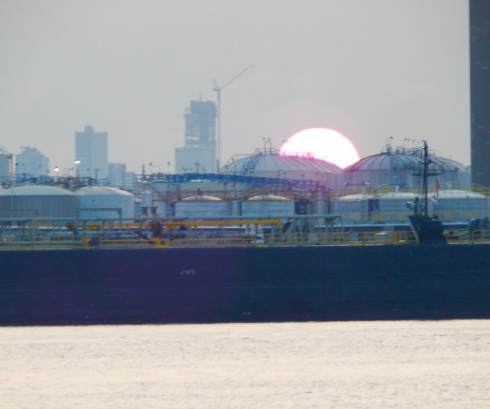


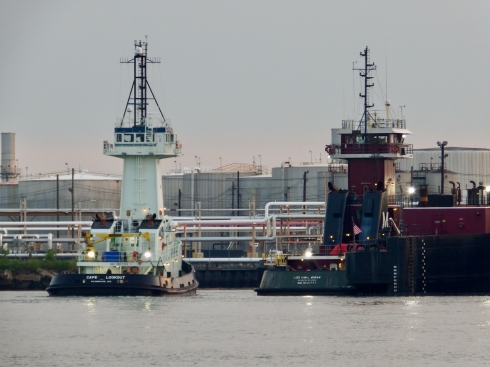



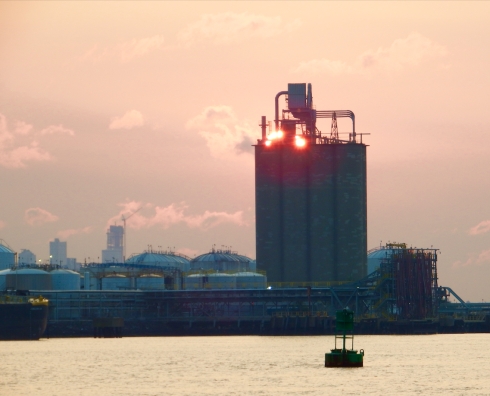
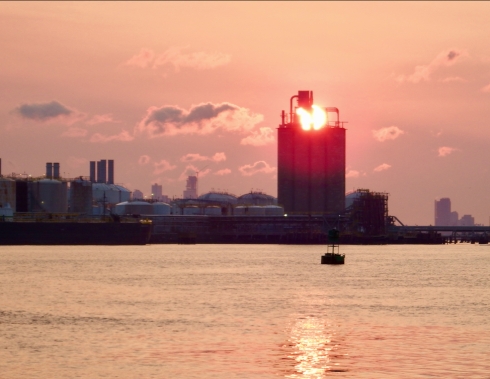


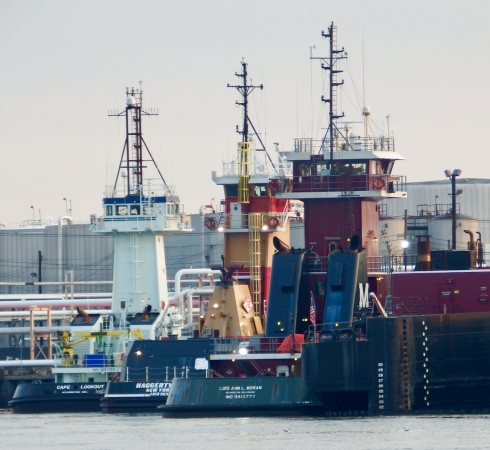
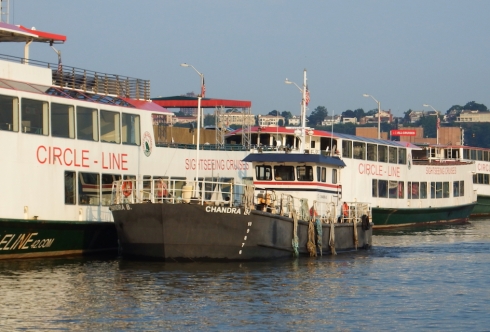
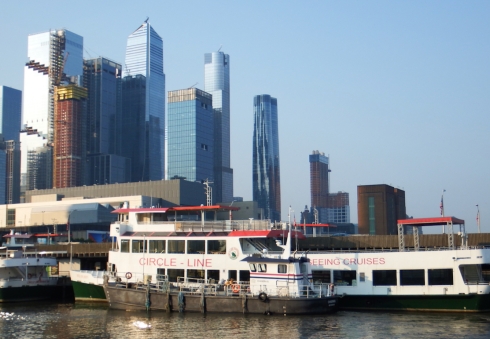
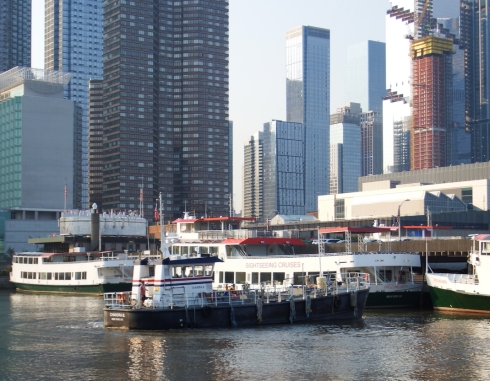
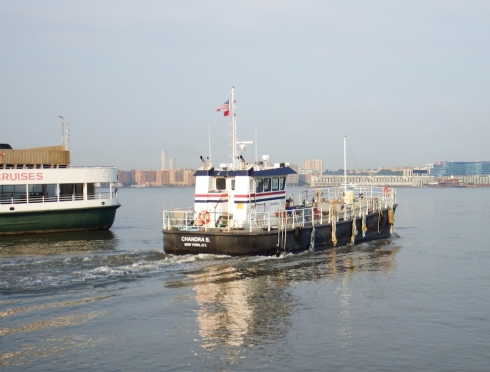
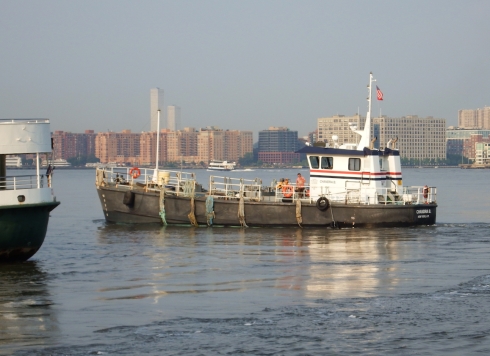




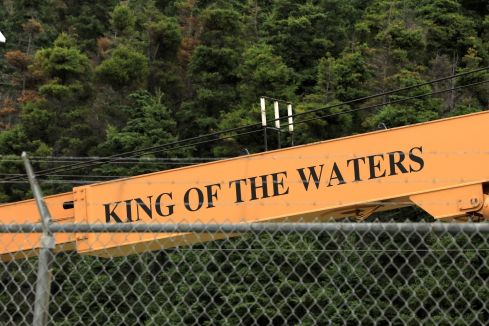














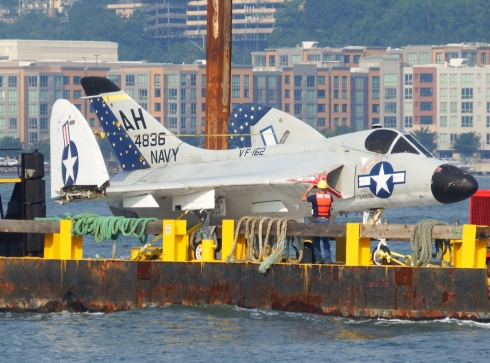









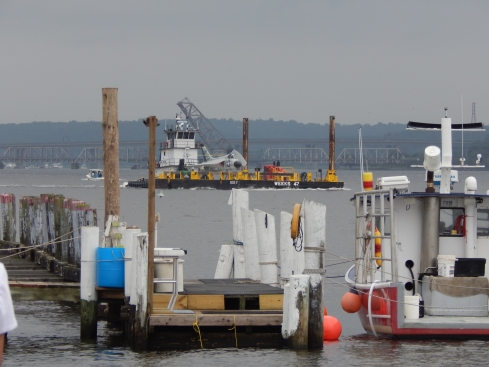




















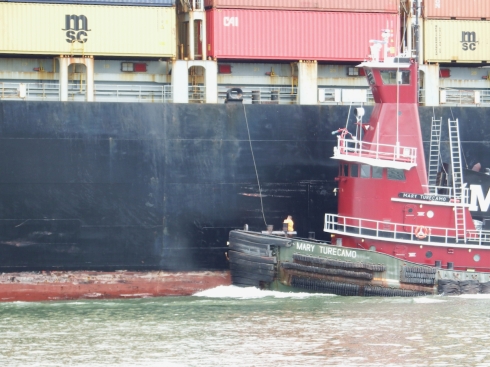


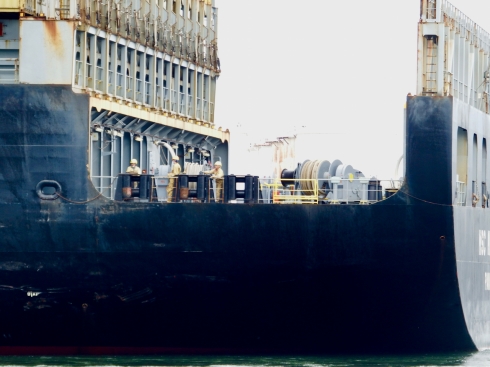







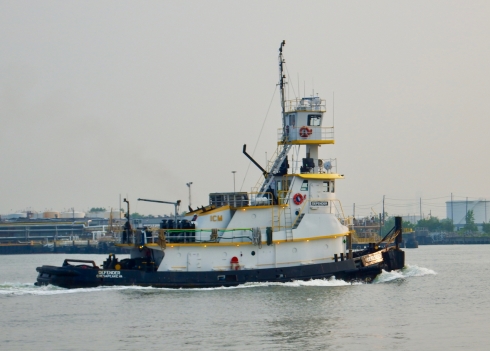














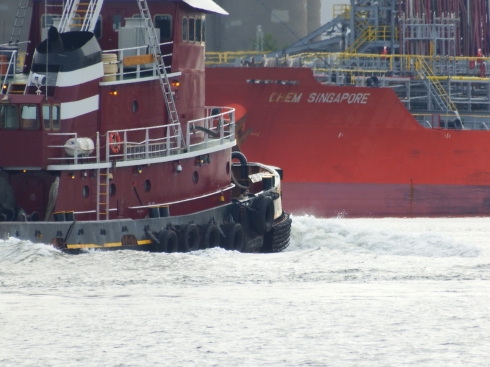


Recent Comments